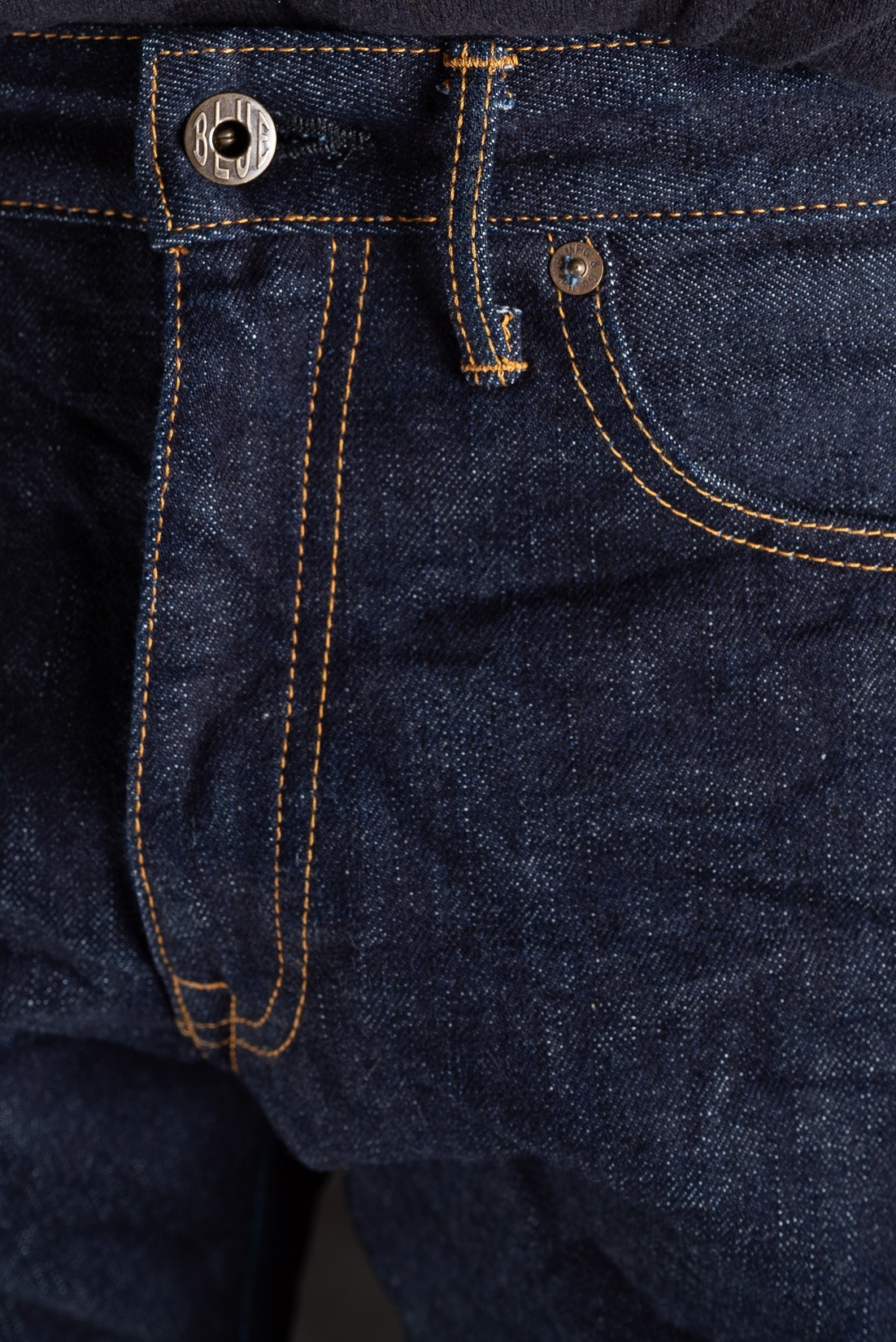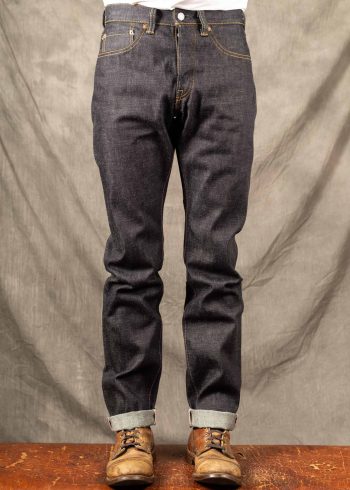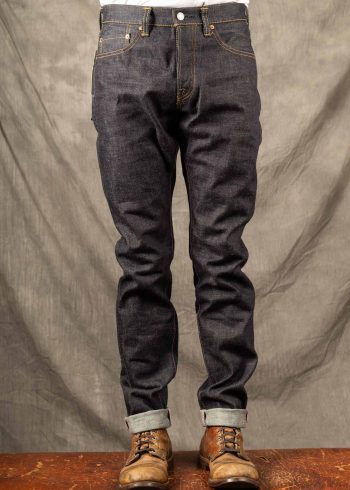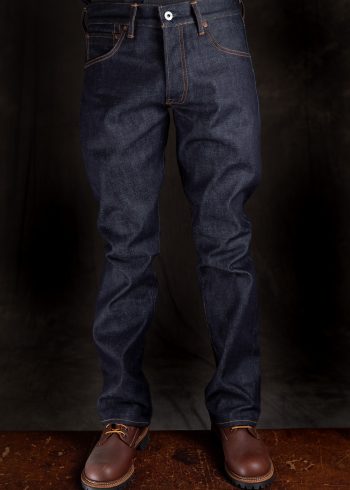
The world is filled with denim, so why should you pay hundreds of euros for a pair of denim pants, when you can get a pair for 20€?
Although they’ve been adapted to the modern everyday wardrobe, denim pants were essentially workwear. As many of you know, the jeans we know today were born in the late 1800s and were made popular by brands like Levi’s by the use of their patented strengthening rivets in the seams, as invented by Jacob Davis.
Today, pretty much all brands offer riveted denim in their selection and the price range varies from tens of euros to thousands. Some designer or vintage pairs are sold for tens or even for hundreds of thousands.
Cheap denim = cheap labor, cheap fabric etc.
When buying a pair of very cheap new jeans, you can be pretty sure that your money goes to the support of unfair labor, environmental hazards, and other harmful and wasteful things. If you chop 20€ to pieces and think about what do the people who made those jeans get out of that 20€, including the material, logistics, and other costs, you can be sure that it’s virtually nothing that they get. Most of your 20€ goes to the shareholders and so on. Also, most of the time, cheap material means poor quality.
That’s why at Pinkomo, we try to choose carefully what denim brands we sell. Unfortunately, the denim we sell costs more than 20€, but there’s a good reason why.
We try to choose brands that manufacture their denim (and other products) in fair working conditions with sustainable methods. We choose denim brands who make quality products and pay a fair salary to the people who make them, that’s why they cannot cost 20€. Some of the denim we sell are even made in small quantities by hand. That’s why the denim we sell are made in countries like Japan or Portugal, as they value quality, working conditions and have a rich history in manufacturing garments.
At Pinkomo We Mostly Sell Raw Denim, What is it?
Raw denim is denim that hasn’t been washed or treated in any way. Raw denim will fade naturally over time, and each pair of raw denim pants become unique when worn. Sort of like a diary of the person who wears them, as each pair of raw denim, will wear differently according to the lifestyle of its user.
In Raw denim, the dark indigo dye will slowly chip away, eventually revealing the white cotton core of the yarns the denim is made of. When buying a new pair of raw denim, be careful what you rub yourself against, as you might leave traces of indigo blue behind you.
Because raw denim is untreated, it can also be pretty stiff when first put on. To prevent some of the indigo bleeding and to soften up your fresh pair of raw denim, you can soak your denim in somewhat cold water before wearing them for the first time.
So why raw denim? Is it better or something?
Raw denim isn’t necessarily always better than washed denim, but most of the time it is. If you think about raw denim, it’s untreated. Untreated also means unharmed. When the fabric hasn’t been artificially stonewashed, lasered, sandblasted, or what-not, you’ll get to enjoy the full life of the fabric. Hence, they will last longer than a treated pair. That’s why some of the vintage pairs even from the late 1800s (as well as newer vintage pairs) are still around, as all denim used to be raw back in the days.
Besides raw, most of the denim we sell at Pinkomo is also selvedge denim, which is denim woven using shuttle looms. Simply said, selvedge denim has had the edge of the fabric “self-edged” by a shuttle loom as it was woven to keep it from unravelling. Just because it’s selvedge though doesn’t mean it’s raw or even that it’s denim — almost any fabric can be woven with a selvedge. Selvedge doesn’t also necessarily always mean better quality by itself, but most of the times mean uniqueness, better and richer texture etc. as the old shuttle looms sometimes almost have a mind of their own.
So Tell Me Already, Why Should I Pay So Much For Denim?
Simply put, you’ll get more value for your money. When buying quality denim, one pair of denim will last you longer, and if/when they break, you can and should always repair them. You cannot repair most of the cheap denim, and depending on your lifestyle, you might wear out 2-4 pairs of cheap denim at the same time you’ll wear out 1 pair of quality denim. Of course, if your lifestyle is very demanding on your jeans (like you spend all your days rubbing your knees against hard concrete), even the best of the raw denim won’t last for ages.
When buying quality items over quantity from smaller brands, you will also support better labor conditions, as well as the environment.
We always encourage you to repair your denim, as well as, to hunt for good quality vintage items.
In the end, you should always choose what is the best way to use your money, and whether or not you want to pay 20€ or 250€ (or more) for denim. At Pinkomo, we just want to offer different solutions and selections for you to choose from than most of the everyday stores.
That’s why we try to carefully choose what brands we sell. If we could offer 20€ denim that would be great quality and fair to everyone involved in the chain (including the environment), we would, but unfortunately at this time it just isn’t possible.
You won’t save the world only by buying better quality denim, but at least you might make yourself happier for a day or two (or more), and you’ll have a diary to remember those happy days from.
Some of the denim we have in stock:




